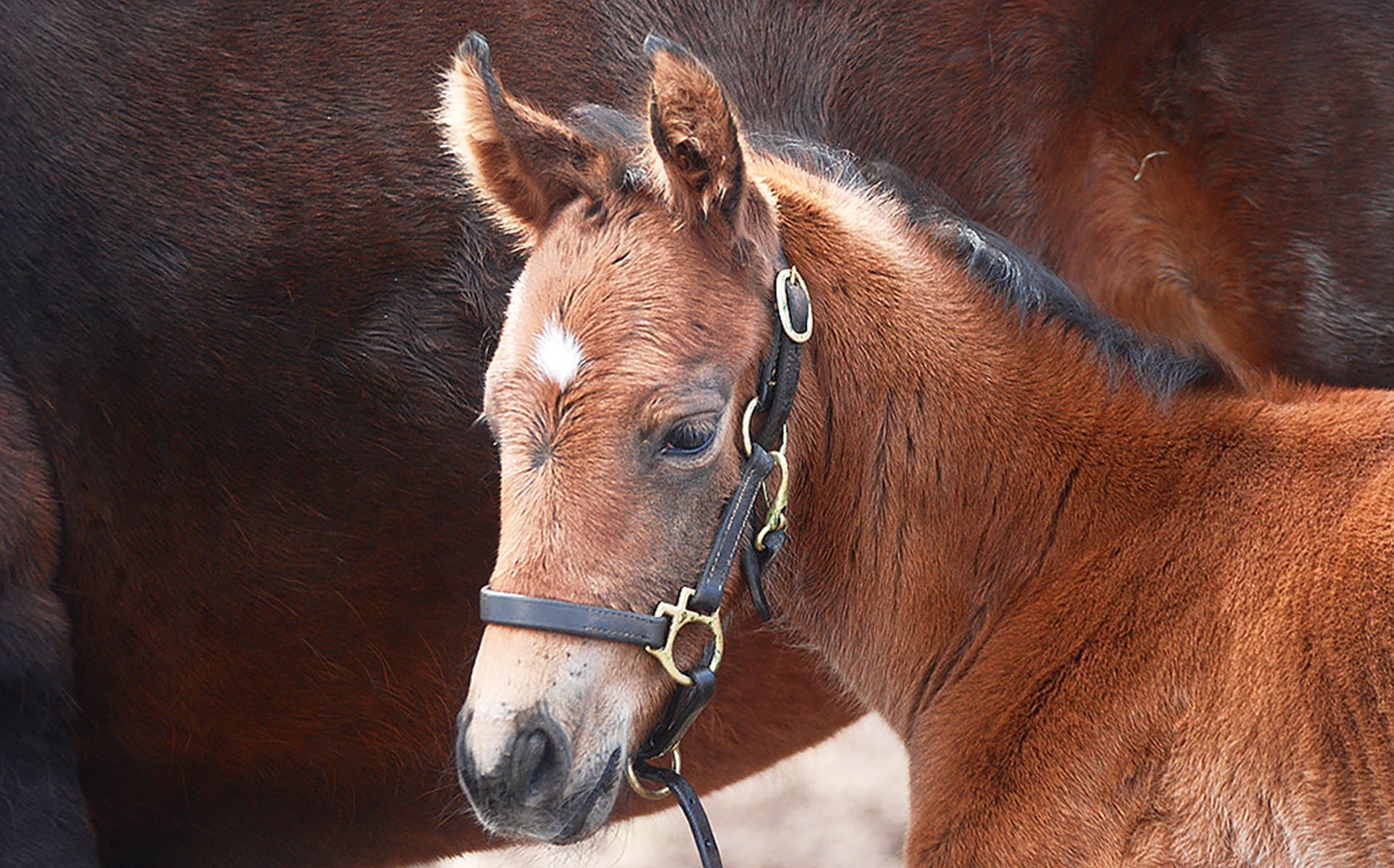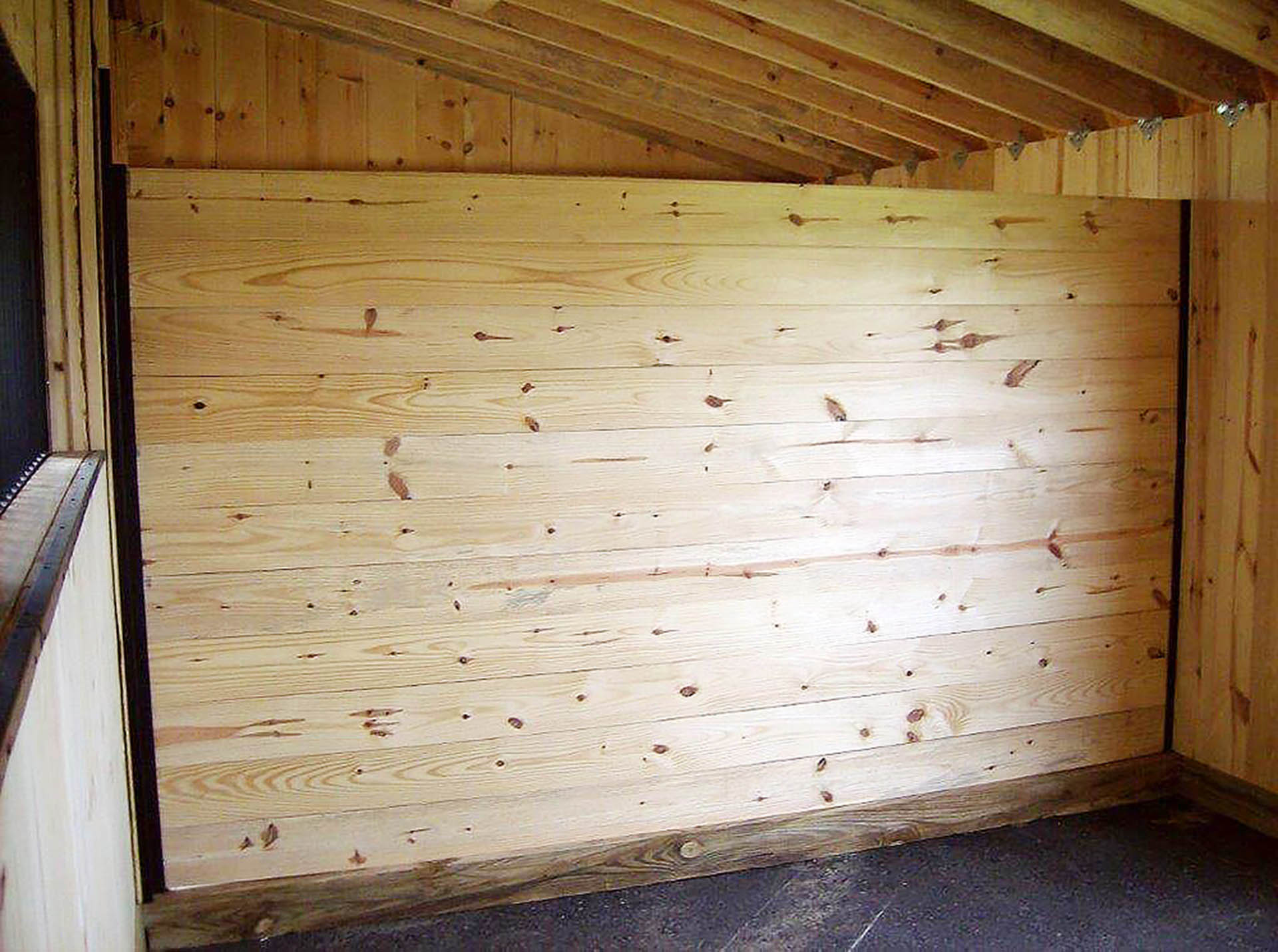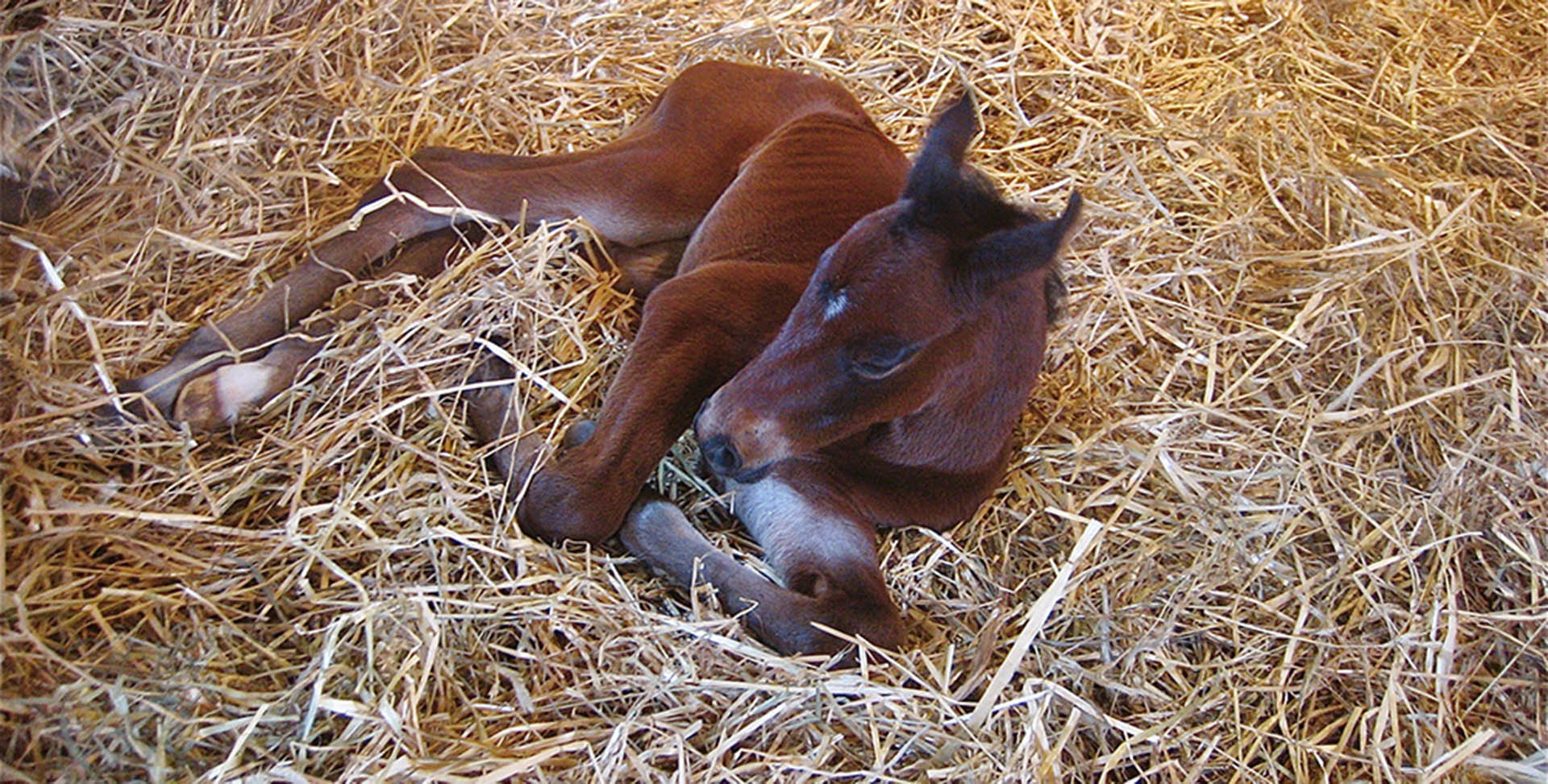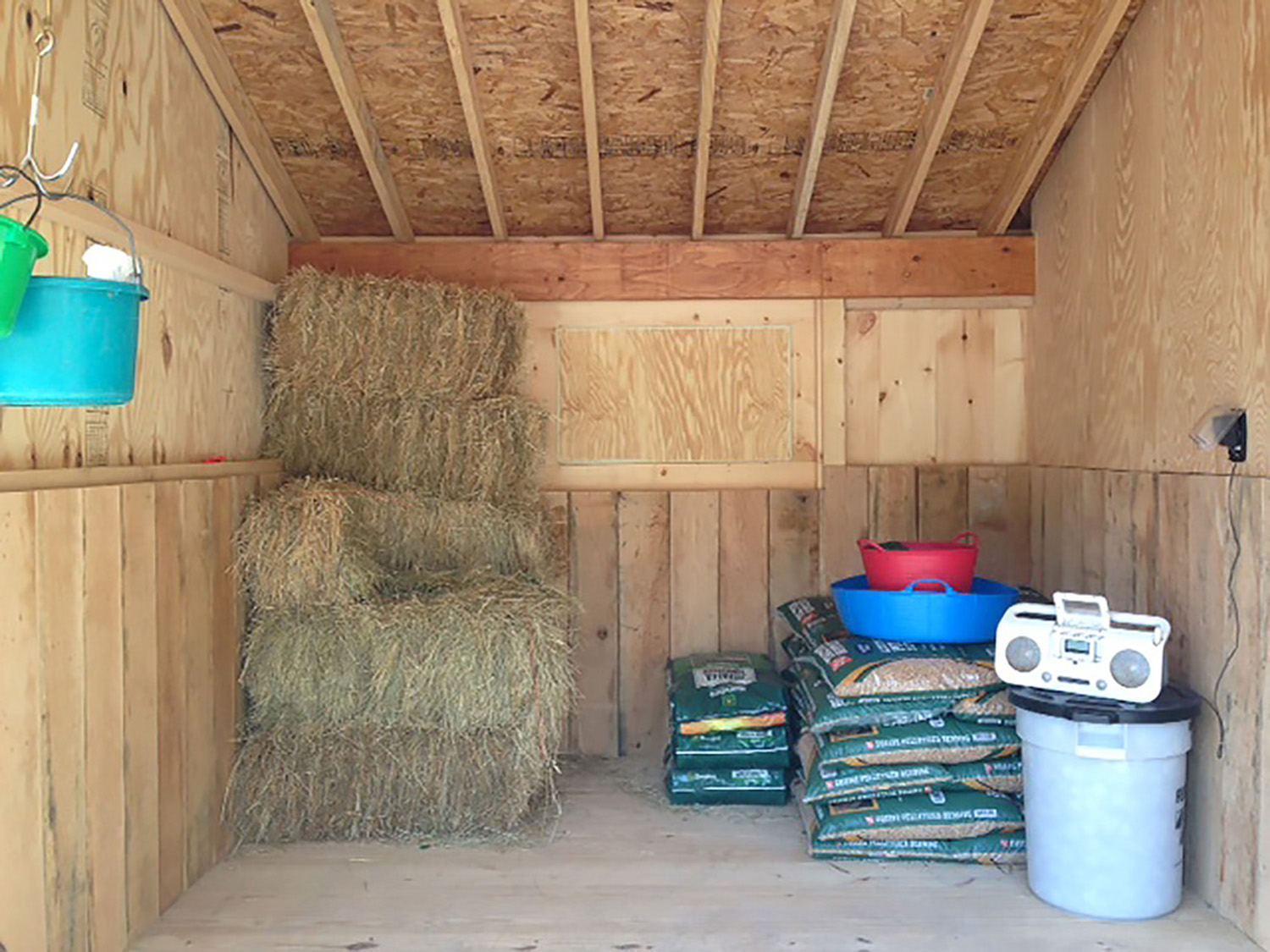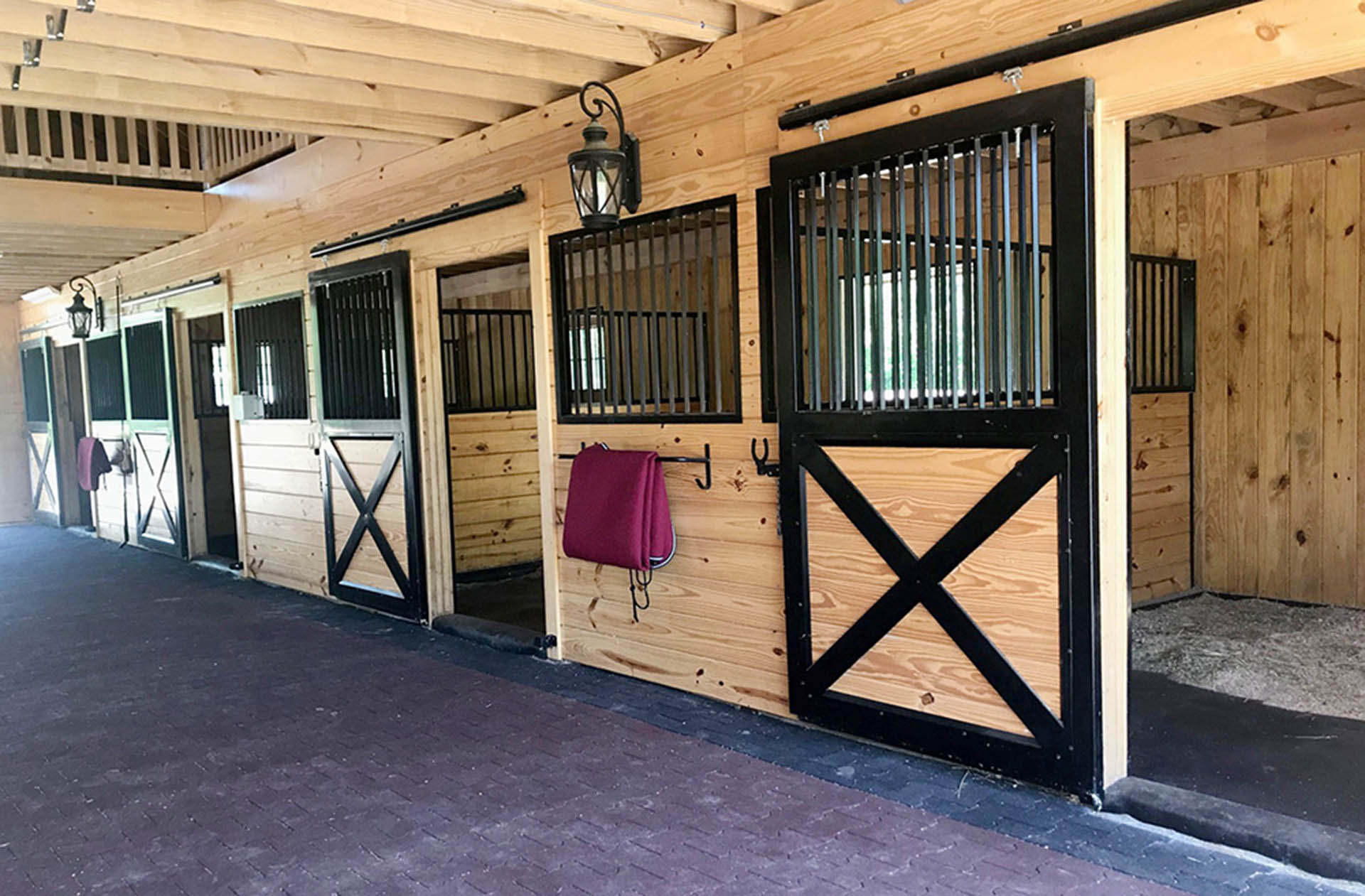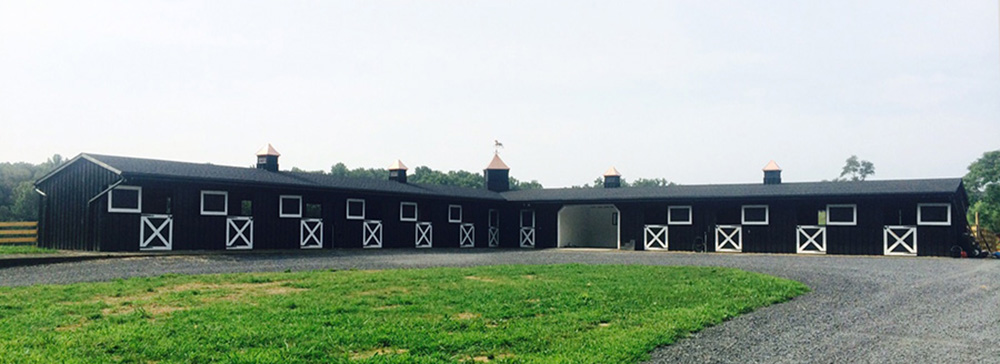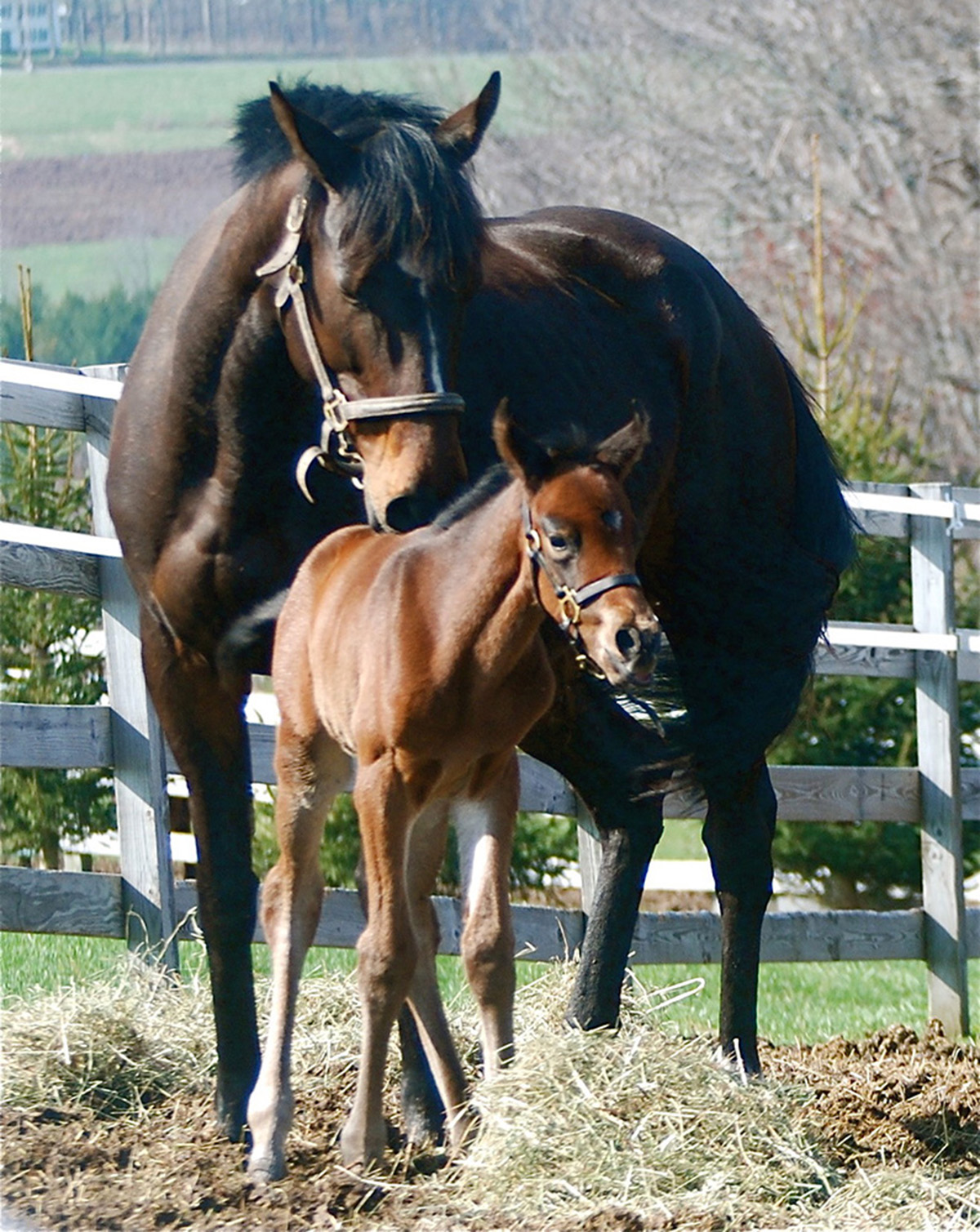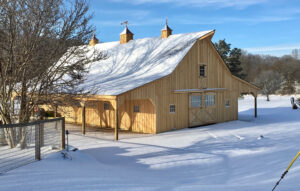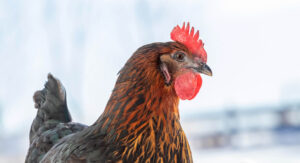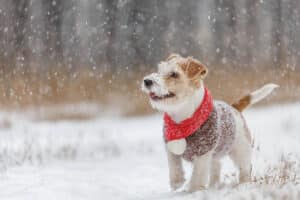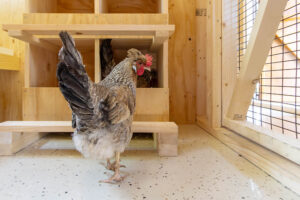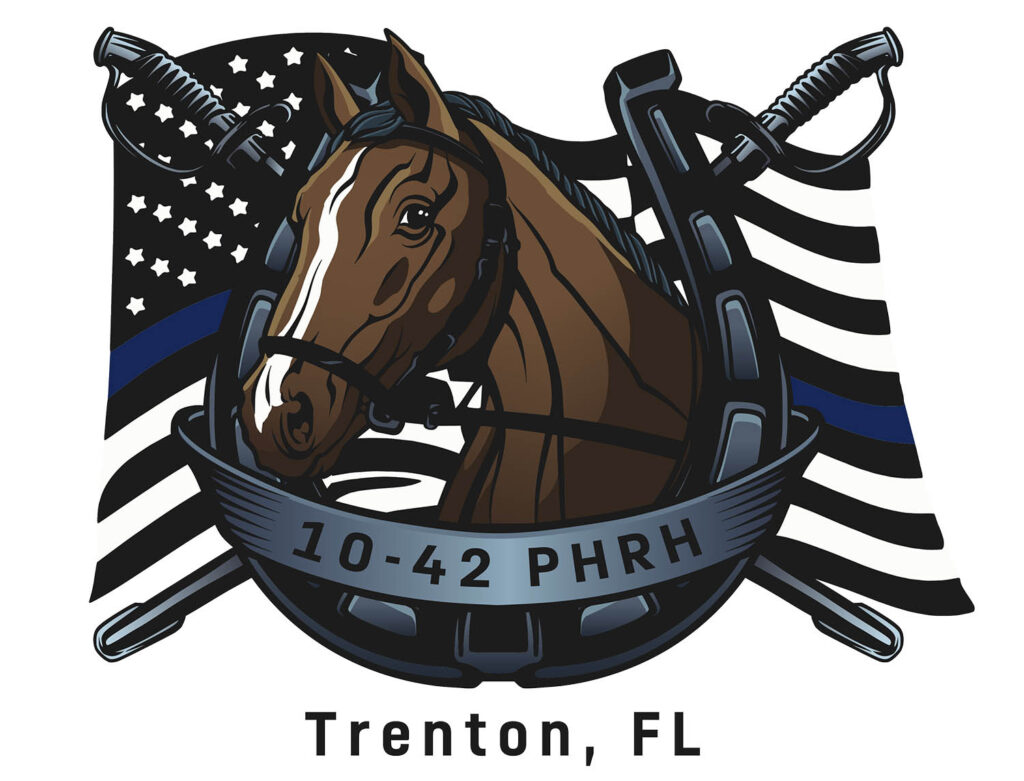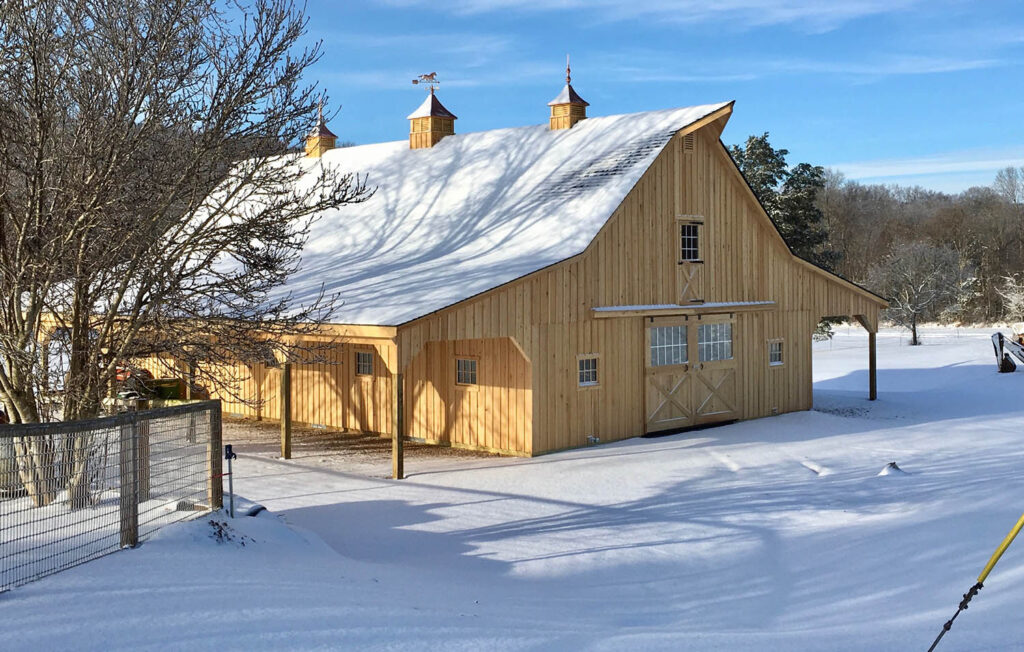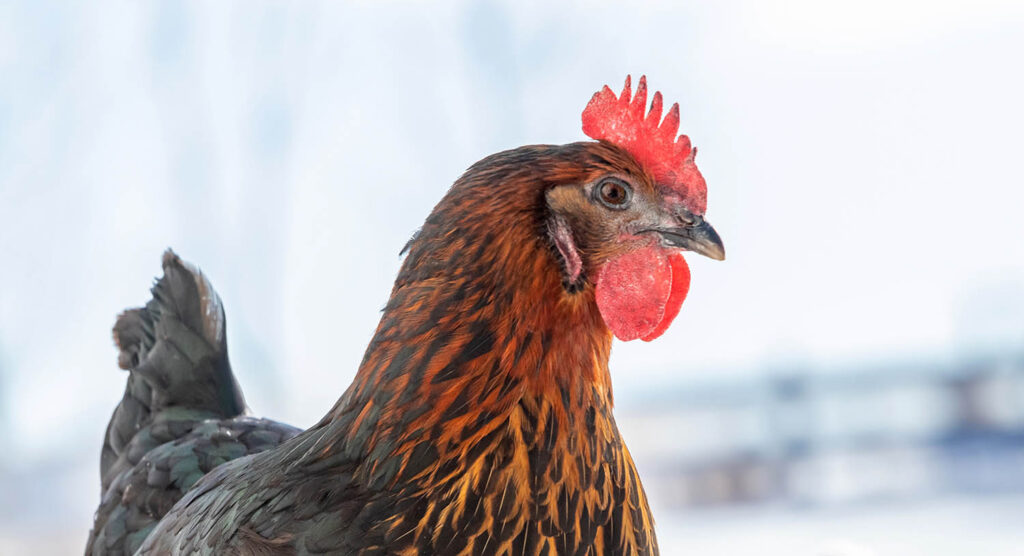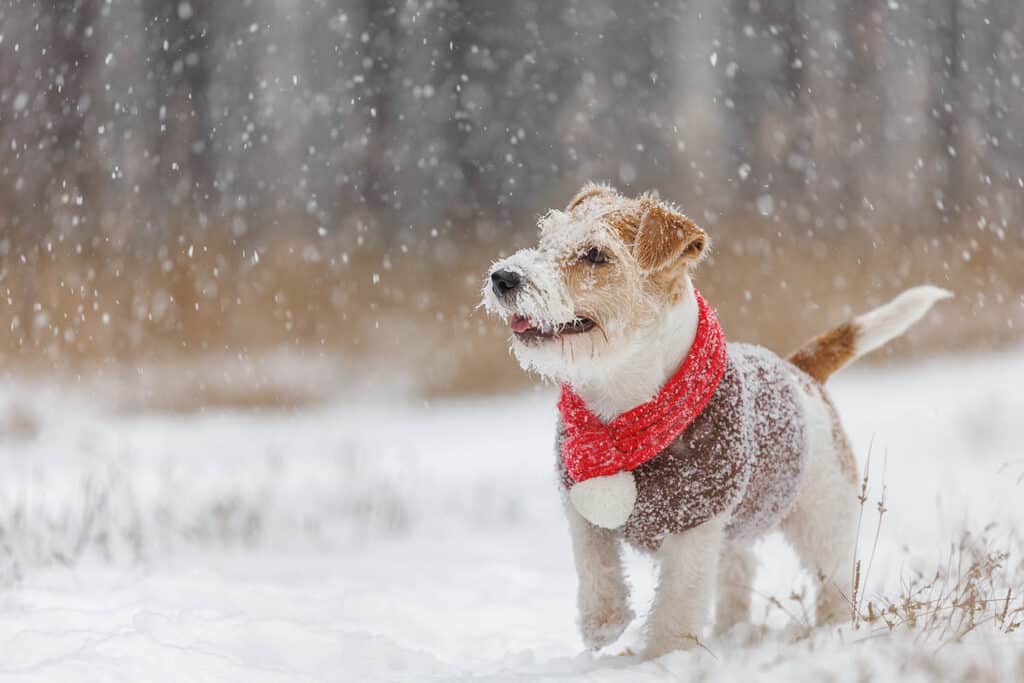Blog By Nikki Alvin-Smith
Whether you are a professional in the horse breeding business or a trainer or owner that occasionally feels the urge to have a mare in foal and foal out your next competition prospect, when it comes to horse housing for breeding stock it is wise to keep these tips in mind when designing your horse breeding farm/barn layout.
As a recent retiree from the horse breeding business (after 25 happy years!), I have been directly involved in designing the horse breeding barns on the two horse farms we developed. The countless endless nights waiting for a mare to foal, the delights of teaching the foal to suckle from his maiden Mom mare, the occasional errant kicks from an exuberant foal or moments of panic due to unexpected separation from baby bringing the family in for dinner when the foal refused to keep up with Mom… are all part and parcel of the world of horse breeding. A well-designed horse barn can mitigate issues with injury and upset and, if possible, it’s best to follow a few basic design rules before you enter into horse breeding.
Stall Size For Foal Out
A pregnant mare necessarily requires some room to move around, especially during parturition, and once the foal is on the floor, you’ll have two stall occupants to contend with that will appreciate space to themselves. A regular 10 x 12 or 12 x 12 foot stall is not large enough to accommodate the twosome. It is not the case that they won’t fit, it is just much more likely that in a confined space Mom may step on baby resulting in an injury. It is also more likely that she will lay down with her back end to a wall and need to be moved to give birth.
The way to double up the stall space is to design your stabling with removable wall partitions that can be taken up and down as necessary to convert two stalls into one.
If you plan on offering mare care and breeding services in your business, the majority of your stalls may be built with removable partitions except for those where you plan to house stallions. If you are an occasional horse breeder then one or two stalls with this option may suffice.
I am sometimes asked the question “Can a stall be too big?”
In my opinion the answer is Yes. An enormous stall will encourage horses to run around the stall. With one horse in a stall, the outcome from their antics is usually fine. When a foal is involved their lack of balance and knowledge or ability to move out of the way of an excited Mom can be an impediment to avoiding injury. It is also more dangerous for the caregiver entering the stall, as there is an opportunity for a horse to move quickly into their space.
During my travels I have seen mares with foals in some worrisome stalls. At a renowned Thoroughbred farm, I’ve seen tiny stalls fashioned in unforgiving breezeblock construction that barely fit mare and foal. Every other foal in the row seemed to have a wrapped lower leg injury as a result of being inadvertently stepped upon.
Other barn elements inviting disaster include: stalls with low walls over which a fractious foal could easily become hung up, stalls with big gaps in the grills, stalls with walls or doors that did not run to the ground but left an inviting gap for a tiny hoof to become trapped… Let’s take a look at all the factors.
Kickboards and Grill Height/Design
If you ever witnessed a foal bouncing around the pasture, you’re aware that their exploration of ‘airs above the ground’, rearing and bucking are commonplace. Stall walls should have kickboards of substantial lumber and the grills should be placed high enough for the particular breed to help prevent tiny feet from becoming caught in the grill.
Distance of the bars on the grill should be less than 3 inches apart to help mitigate the chances of injury. The stall door should also have no gap beneath and be of sufficient height to prevent a young horse or foal jumping out of the stall or becoming caught with a hoof over the top.
Similarly, the quality of the build and the height of walls and grills should be sufficient to keep a stallion’s antics in check should he become excited at a mare in heat passing by.
All windows should be protected from errant abuse with the provision of a grill that can be easily removed for window cleaning. Screens on the windows will help deter flies from the stall.
Mares and Stallions Can Cohabit A Barn
While it is obviously stressful to stable a mare in season next to a stallion, smart use and design of your new barn will help alleviate most issues. For example, an L-shaped shedrow barn provides the opportunity to stable mares at one end of the structure and stallions at the other.
Stallions can be taught that when a certain halter is used and they are led in one direction out of their stall it is breeding time, and when another halter is used and they are led the other direction it is simply ‘another day at the office.’ As with any training you provide to your horses, consistency is the key to success.
Extra Provisions Needed For Breeding
Aside from the obvious extra medical kit items like enemas, a .5% chlorhexidine solution (such as Nolvasan) for dipping the umbilical cord stump, rubber gloves, betadine, or whatever else your vet might suggest, you should allow space for storage of the right hay and bedding supplies for both gestation, parturition and lactation.
A note on the use of blankets: If you must use a blanket on the mare as delivery time approaches, be certain it does not include a tail strap or leg straps. A client of mine that regularly breeds Andalusians, had a mare foal out unexpectedly early, and sadly the foal became trapped in the leg straps resulting in injury.
A mare in late gestation may require an additional calorific intake through parturition and throughout her lactation period. For this reason if she is currently on 1st cut hay, you may need to add 2nd cut hay to her diet. 2nd cut hay is also easier for the foal to nibble during his early foray into dining on Mom’s rations. It is wise to consult with your veterinarian for best advice.
Additionally, if you currently bed your horses on shavings or sawdust, you may want to stock up on wheat or oat straw for use as bedding as foaling out time approaches.
The reason straw is often preferred over shavings is because it is less abrasive and unlikely to be pulled into the mare’s reproductive tract during the parturition process. However, if straw is used over rubber mats then the floor can become slippery so it is considered prudent to switch out to pine shavings once the birthing process is complete.
The Klebsiella bacterium is most commonly found in oak not pine shavings, and regardless of whether straw or shavings are used, it is the cleanliness of the stall and the swift application of chlorhexidine to the navel of the foal after the umbilical cord has come away that offers the best way to avoid infection of the foal’s navel.
The other factor to consider when bedding a mare and foal on straw post-parturition, is that the straw often hides a foal’s foot or leg when it lays down. As the mare cannot see the extremity, she may step on a foal by accident.
In your horse breeding barn/farm layout provide an empty stall space in a central location within the building so supplies are handy. A wooden floor can provide a clean, dry and easy sweep surface to prevent moisture seeping up from the ground and contaminating the provisions.
When choosing straw, it is best to stick to wheat straw if possible, as oat and barley straw can be ingested by the horse may cause choke.
Sliding Stall Doors Are Safest For Interior Use
If you’ve ever handled mares and foals then you know that leading them in and out to pasture can be an adventure, especially with maiden mares that do not like their babies to be out of sight for a minute.
With a center aisle design barn, whether it is a High or Low Profile, the sliding door will offer the most safety, as it will not swing back, obstruct or hit the horse on the hip or face when it is open.
Inside/Outside Turnout Options
If you add exterior doors to your stalls and provide an adjacent foal safe enclosure, a mare and foal will quite happily come and go as they please. The disadvantage of this method is that you won’t necessarily be haltering and handling your foal on a daily basis.
Regular and consistent handling is important for all horses. Foals should be taught to lead with a halter and a rope looped behind their rump to encourage them to walk forward (rather than pulling on their delicate necks using the rope on the halter when they stop or back up).
In our breeding program we instituted the use of imprint training on all our foals decades ago, and have found it to be very useful for future training of the horses. I recommend Robert Miller’s approach, which can be found on DVD and online.
Stallion Collection Area
If you plan to train your stallion to collect for AI or offer live cover for mares, a safe space is essential for the purpose. The area should be large and it should be away from the daily operation of the barn, either at one end of the building or in a separate barn.
For semen evaluation, adding of extenders etc., and laboratory work a small office space can be invaluable addition to your barn. The area should offer heat and hot water, have cleanable work surfaces and offer refrigeration plus lots of storage for supplies.
Viewing Space
Thoroughbred farm operations often build their mare station with an octagonal stall design so foal watch can be accomplished from the center of the building. This is obviously ideal for large breeding operations. Today’s technology can help horse breeders keep watch over their mares with pings to their phones based off birthing alarms and live video streams of the birthing stall.
Ventilation & Lighting
All horses and their caregivers benefit from fresh air, even during colder winter months. Soffit venting, ridge vents, gable vents, cupolas and windows can provide an excellent airflow. Certain barn designs such as shed rows and High Profile or Monitor barns without a loft space also offer good air circulation. Another advantage of a shedrow design is you can easily add to it later as your operation grows.
Consider roughed in electrics for your new barn purchase for both lighting circuits and for the addition of outlets for veterinary equipment use, fans and vacuums.
Check with your local code enforcement officer for permits and use requirements.
In all things horses safety first is paramount. When shopping for your new horse barn don’t be shy about asking lots of questions regarding custom options or upgrades that will suit your specific needs, now and in the future. Flexibility in design can be a boon down the road, and stalls where adjacent walls can be easily removed can be useful not only for foaling but also for rehabilitation of an injured or sick horse.
The horse breeding business has provided many years of enjoyment for my husband and myself, and we have been fortunate over those years to have never lost a mare or foal with the exception of one fetal resorption.
I wish you all the best of luck in your horse breeding career. There is nothing more exciting to get you through the winter months than the anticipation of a new horse on the horizon that you have carefully planned. I miss it!


